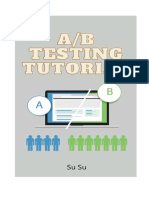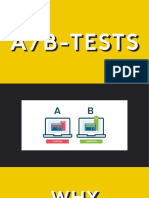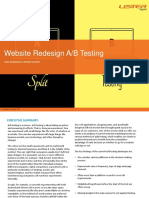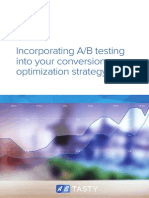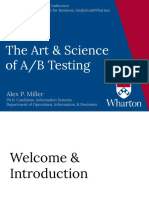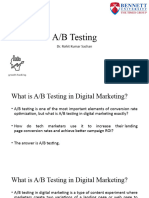0% found this document useful (0 votes)
24 views2 pagesAB Testing
A/B testing, or split testing, compares two versions of a product to determine which performs better by analyzing metrics like conversion rates. It involves defining a clear goal, ensuring only one element differs between versions, and using random sampling to assign visitors. Understanding statistical hypotheses and potential errors is crucial for reliable results in A/B testing.
Uploaded by
KalpanaCopyright
© © All Rights Reserved
We take content rights seriously. If you suspect this is your content, claim it here.
Available Formats
Download as DOCX, PDF, TXT or read online on Scribd
0% found this document useful (0 votes)
24 views2 pagesAB Testing
A/B testing, or split testing, compares two versions of a product to determine which performs better by analyzing metrics like conversion rates. It involves defining a clear goal, ensuring only one element differs between versions, and using random sampling to assign visitors. Understanding statistical hypotheses and potential errors is crucial for reliable results in A/B testing.
Uploaded by
KalpanaCopyright
© © All Rights Reserved
We take content rights seriously. If you suspect this is your content, claim it here.
Available Formats
Download as DOCX, PDF, TXT or read online on Scribd
/ 2
